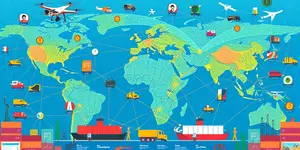
In an era defined by constant technological advancement and ever-shifting market demands, traditional college degrees are no longer the sole determinant of professional success. Employers increasingly recognize that static credentials often fail to capture the adaptability and hands-on know-how required for today’s roles.
Across industries—from manufacturing floors to digital marketing teams—the ability to demonstrate practical, up-to-date competencies has overtaken formal diplomas in hiring priorities. Professionals who embrace continuous learning through targeted training programs are finding themselves in high demand, reshaping the talent landscape worldwide.
Compelling data from authoritative sources highlight the scale of this transformation. According to the World Economic Forum, 50% of all employees will need reskilling by 2025 to remain relevant in their roles. In parallel, estimates indicate that 85 million jobs could be displaced by automation, while up to 97 million new positions will emerge requiring distinctly different skill sets.
Additional insights reveal that only 13% of college graduates enter the workforce with immediately job-ready skills, and 54% end up working outside their field of study. Learning and development professionals report that 79% of reskilling programs are less expensive than hiring new talent, reinforcing the business case for upskilling existing staff.
Today’s hiring managers are moving away from the traditional checklist of degrees and GPAs, favoring evidence of real-world capability in areas like software development, data analysis, and customer engagement. By adopting skills-based recruitment frameworks, companies can more precisely align job requirements with candidate strengths and accelerate their onboarding processes.
Moreover, more than half of businesses report that investing in reskilling initiatives directly reduces time-to-productivity and lowers recruitment expenses. Organizations that cultivate internal talent pipelines enjoy stronger retention rates and attract a broader spectrum of applicants, including those from non-traditional backgrounds.
For employees, reskilling offers a clear path to career advancement and long-term employability. When companies actively support workforce development, 94% of workers express a desire to stay longer, underscoring the link between growth opportunities and loyalty.
Corporate giants are leading by example. Amazon’s $700 million Skills Training Fund and JPMorgan Chase’s $350 million commitment to employee education illustrate how large-scale investment in learning can drive business outcomes. These programs span digital literacy, cloud computing, and project management courses tailored to evolving organizational needs.
Smaller firms are innovating too. A regional manufacturing company partnered with a technical college to retrain assembly-line workers on automation and robotics. Within twelve months, productivity soared by 30% and operational errors dropped by 25%, proving that focused reskilling can deliver rapid, measurable results.
Despite clear benefits, many organizations encounter obstacles when implementing reskilling programs. Key challenges include selecting relevant curricula, securing executive sponsorship, and establishing metrics that accurately gauge skill acquisition and performance impact.
Demographic factors also influence participation rates; younger employees often embrace new learning modalities more readily, while seasoned professionals may require tailored support and flexible scheduling to balance reskilling with existing responsibilities.
As industries evolve, lifelong learning will become a foundational expectation. The rise of micro-credentials and digital badges will offer granular proof of expertise, enabling workers to showcase specific competencies to potential employers or internal stakeholders.
Educational institutions, corporations, and policymakers must collaborate to build agile ecosystems that support continuous skill renewal. This will involve innovative partnerships, shared learning platforms, and adaptive funding models that prioritize outcomes over traditional certification processes.
Skills as the new currency signals an exciting redefinition of talent evaluation. Organizations that champion reskilling and upskilling will cultivate resilient, future-ready teams, while individuals equipped with relevant competencies will unlock rewarding career trajectories in the digital age.
References













